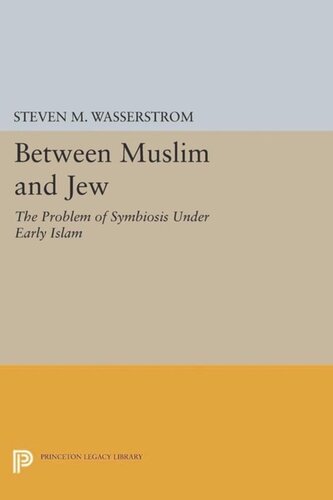

Most ebook files are in PDF format, so you can easily read them using various software such as Foxit Reader or directly on the Google Chrome browser.
Some ebook files are released by publishers in other formats such as .awz, .mobi, .epub, .fb2, etc. You may need to install specific software to read these formats on mobile/PC, such as Calibre.
Please read the tutorial at this link: https://ebookbell.com/faq
We offer FREE conversion to the popular formats you request; however, this may take some time. Therefore, right after payment, please email us, and we will try to provide the service as quickly as possible.
For some exceptional file formats or broken links (if any), please refrain from opening any disputes. Instead, email us first, and we will try to assist within a maximum of 6 hours.
EbookBell Team

4.0
36 reviewsSteven Wasserstrom undertakes a detailed analysis of the "creative symbiosis" that existed between Jewish and Muslim religious thought in the eighth through tenth centuries. Wasserstrom brings the disciplinary approaches of religious studies to bear on questions that have been examined previously by historians and by specialists in Judaism and Islam. His thematic approach provides an example of how difficult questions of influence might be opened up for broader examination.
In Part I, "Trajectories," the author explores early Jewish-Muslim interactions, studying such areas as messianism, professions, authority, and class structure and showing how they were reshaped during the first centuries of Islam. Part II, "Constructions," looks at influences of Judaism on the development of the emerging Shi'ite community. This is tied to the wider issue of how early Muslims conceptualized "the Jew." In Part III, "Intimacies," the author tackles the complex "esoteric symbiosis" between Muslim and Jewish theologies. An investigation of the milieu in which Jews and Muslims interacted sheds new light on their shared religious imaginings. Throughout, Wasserstrom expands on the work of social and political historians to include symbolic and conceptual aspects of interreligious symbiosis. This book will interest scholars of Judaism and Islam, as well as those who are attracted by the larger issues exposed by its methodology.
Originally published in 1995.
The Princeton Legacy Library uses the latest print-on-demand technology to again make available previously out-of-print books from the distinguished backlist of Princeton University Press. These editions preserve the original texts of these important books while presenting them in durable paperback and hardcover editions. The goal of the Princeton Legacy Library is to vastly increase access to the rich scholarly heritage found in the thousands of books published by Princeton University Press since its founding in 1905.